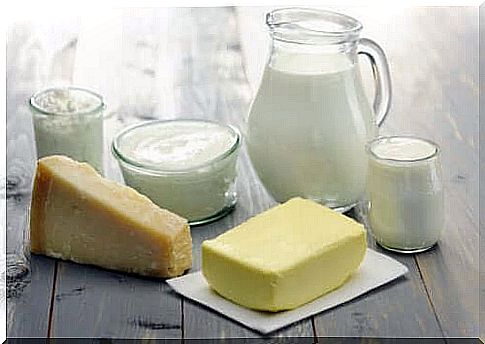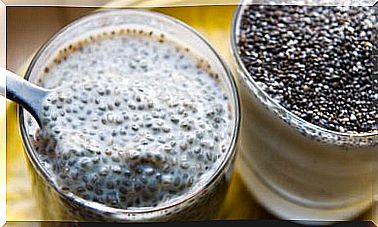Skimmed Milk Versus Whole Milk
The main difference between these two types of milk is that the skimmed milk contains less fat and therefore fewer calories.

If you want to know more about the latest research into the skimmed and whole milk controversy, don’t miss this article. Because this will help you to clarify your doubts once and for all.
Often one of the first steps taken when starting a weight loss diet is to replace the whole milk consumed daily with skimmed milk. This reduces fat consumption and nothing stands in the way of gradual weight loss.
Of course, there are also people who change their type of milk based on their personal taste, as they find that whole milk is heavier and richer in fat. Whatever your individual reason, it is important to carefully analyze the foods as they are part of our daily diet. It is therefore interesting to know whether skimmed milk is the best alternative to consume regularly.
Skimmed milk versus whole milk?
The main difference between these two types of milk is that the skimmed milk is lower in fat and therefore contains fewer calories.
However, by eliminating fat, the fat-soluble vitamins A, D and E are also filtered out. Nowadays, however, almost all semi-skimmed or fully skimmed dairy products are already fortified with these vitamins.
Also read: Alternatives to cow’s milk: 7 tips
Which is more nutritious, whole milk or skimmed milk?

As we mentioned earlier, the main difference between these two types of milk is the percentage of fat. However, this has an impact on both the calories and the taste.
But it is more than that. By reducing the fat in the milk, the skimmed milk loses the fat-soluble vitamins that are characteristic of milk: in particular vitamins A, D or calciferol. A certain amount of vitamin E or tocopherol is also lost naturally during skimming.
According to Professor Sergio Casalmiglia, who works at the University of Barcelona, this contributes to a decrease in calcium absorption capacity, which goes better in our digestive system in conjunction with milk fat and vitamins.
At the present time , the skimmed milk is sent to us as a consumer available, these differences in fat-soluble vitamins and the amount of calcium does not occur, because the vitamins A, D and E are artificially added. Another question is whether these are absorbed into our body in the same way.
These are not necessarily synthetically produced vitamins, but neither do they necessarily have to come from the extracted fat. This means that both types of milk are basically equivalent from a nutritional point of view, except that one of them has fewer calories.
What do the studies say about this?
A study published in the American Journal of Nutrition in 2017 ensures that consuming cheese and yogurt, with all of their ingredients, is not only not responsible for promoting obesity, but actually helping to prevent obesity and diabetes. This could not be observed in this study among consumers of skimmed milk products.
Furthermore, another study by Dr. Dariush Mozaffarian made it clear that drinking whole milk can even prevent diabetes. In this study, the blood of more than 3,000 people was analyzed over a period of 15 years. Those who consumed whole milk were 46% less likely to have the disease.
On the other hand, the researcher Mohammed Yakoob, who works at Harvard University, did not find a meta-analysis of medical records in the USA with regard to intake of whole milk and obesity or diabetes. On the contrary, his research suggests that consumers of whole milk appear to be better protected.
Whole Milk or Skimmed Milk? Further studies with children
A study published in 2016 looked at the diets of 2,700 children between the ages of two and six. The results showed that those children who drank whole milk had lower body mass.
Dr. Dariush Mozaffarian explains, “I think these results indicate that we need a change in policy recommending that only low-fat dairy products should be consumed. There is no evidence that those who are more likely to consume low-fat milk are in better health than those who consume whole milk. “
We hope you found this information useful, but of course the choice is entirely yours.









